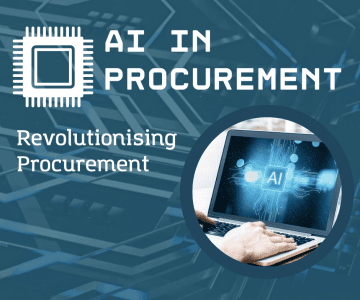The highs and lows of program management – it’s a rollercoaster!

Unless you’re exceptionally lucky, you’ve probably realised that life sometimes doesn’t go to plan. The same is true of Program Management – no matter how well you plan you’re likely to experience both highs and lows along the way.
Depending where you are in the program lifecycle the challenges (and benefits!) you are experiencing will vary widely. Understanding the realities of what is occurring at each stage will help you to plan and manage your program, setting you up with the best chance of realising your objective.
Missed our last article? Click here to find out where you are in the program lifecycle.
Stage 1 – Need Identified
A problem or opportunity may exist which requires specific action or effort to overcome or realise. Need identification focuses on understanding the problem or opportunity and deciding whether action should be taken.
This early stage is all about research, prioritisation and agreement. Unsurprisingly the common pain points focus on ensuring you can access reliable data and can get input (and buy-in!) from your stakeholders.
The Lows:
- You can’t find the data you need or (worse) it’s not reliable
- You’re battling to get genuine input and engagement from your stakeholders
- Everyone you speak to has a different opinion. It feels impossible to reconcile the different views
- You’re under pressure to address the squeaky wheels rather than robustly assess real needs – how do you make sure you have real impact?
The Highs:
- You finally understand and have agreement to the problem, or scope of the opportunity
- A wealth of reliable and complete data is available to inform, support and justify your decision making
- You have secured much needed funding to get the program off the ground
Stage 2 – Program Design
A decision has been made to address a defined need. Determine how best to address the need through program design.
Planning for a program is a contentious and challenging process. You may find yourself with a blank slate and no clear way forward and/or working to try and accommodate strong (and sometimes conflicting) views about what the program should look like.
The Lows:
- You can’t find information about how the problem has been addressed in the past, or what may work in your situation
- You are struggling to quantify benefits and risks as part of your design, and lack a framework to compare your options
- Your key stakeholders and decision makers don’t agree around the best way to address the problem or respond to the opportunity
- There is too much to do! You’re trying to manage competing priorities within scarce resources and can’t work out if this program the best use of time and money
The Highs:
- Your program design is fit for purpose, evidence based and defensible – you’re feeling confident ready to answer those tricky questions
- You have a documented and agreed program design and logic model giving you a clear wayforwards
- The service delivery model is clearly defined and agreed – everyone knows what happens next

Stage 3 – Implementation
Once you have an agreed plan its time to prepare for ongoing delivery. Start to implement your program, bedding down processes to ensure they are efficient, effective and become business as usual.
While this phase will have huge benefits and ultimately get your program started, putting your theoretical program design into practice is a process that needs to be carefully managed.
The Lows:
- Establishment tasks may take significantly longer than anticipated
- Governance mechanisms may not adequately support decision making, quality assurance and risk management
- Staff and key beneficiaries may be suffering from change fatigue and be reluctant to engage
- Nobody can agree how the program will be implemented, and what will be monitored and assessed to show success
- There is inadequate system support for program delivery and management
The Highs:
- Implementation occurs on schedule and plan (isn’t it nice when things just work?!)
- Implementation risks are managed – any teething issues are handled well and with minimal negative impacts saving you any headaches
- Stakeholders are working well together. Everyone is getting along!
Stage 4 – Monitoring and Assessment
Regularly monitor and assess your programs to understand what is working well and where change should be made to ensure program objectives can be realised.
Once a program is operational its easy to drift into a ‘set and forget’ mindset. You may have competing priorities that demand your attention or the program appears to be tracking well with limited need for intervention. While applying the effort and discipline to monitor and assess your program can be a struggle, it is crucial to keeping you on track.
The Lows:
- The data you have is insufficient or inadequate to inform analysis and decision making (ie. poor sample size, poor quality, irrelevant, lack of stakeholder buy-in etc)
- You’re unsure how to monitor and assess whether the program is on track
- Data shows changes have occurred (that are hopefully positive!) but you’re struggling to link and attribute this to your program
The Highs:
- You’re able to celebrate your successes – you have robust evidence about the positive impacts of your program
- You are aware of challenges or issues early, allowing you to adapt and enhance the program
- The case is crystal clear regarding future investment in the program
Stage 5 – Improvement
Take a continuous improvement mindset to adjust and improve your program design and delivery to ensure it is effective, efficient and appropriate. This will save you time in the future and ensure you’re positioned for program success.
Despite best intentions its unlikely that the first (or second!) iteration of your program will be perfect. Think of your program as a work in progress and apply continuous improvement activities to optimise your design, delivery and impact.
The Lows:
- You have a million things to do an don’t have the time or resources to make changes to the program
- You’re struggling to get air time with decision to address known problems
The Highs:
- You can plan and implement strategies to address known challenges, optimising delivery and achievement of outcomes
- Program design and delivery is optimised to ensure it is practical, aligned with the needs and preferences of key stakeholders, and established in a manner which supports realisation of objectives
- The program is effective, efficient and appropriate
- Learnings are shared to ensure other programs are positioned for success










